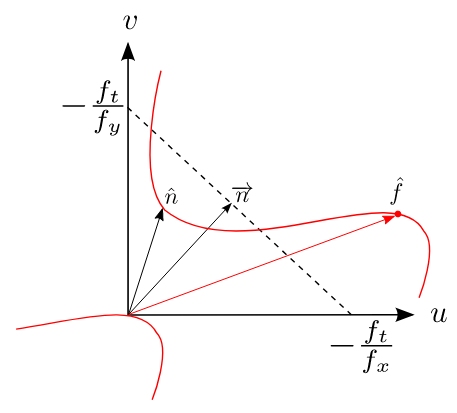Méthodes d’analyse de mouvement en vision 3D : invariance aux délais temporels entre des caméras non synchronisées et flux optique par isocontours
memoire » Ph.D.Rania Benrhaiem
Tags: camera synchronisation , temporal delay , epipolair geometry , 3D reconstruction , temporal delay invariance , optical flow
Date : 2016-12
Papyrus
http://hdl.handle.net/1866/18469Abstract
 In this thesis we focused on two computer vision subjects. Both of them concern motion analysis in a dynamic scene seen by one or more cameras. The first subject concerns motion capture using unsynchronised cameras. This causes many correspondence errors and 3D reconstruction errors. In contrast with existing material solutions trying to minimize the temporal delay between the cameras, we propose a software solution ensuring an invariance to the existing temporal delay. We developed a method that finds the good correspondence between points regardless of the temporal delay. It solves the resulting spatial shift and finds the correct position of the shifted points. In the second subject, we focused on the optical flow problem using a different approach than the ones in the state of the art. In most applications, optical flow is used for real-time motion analysis. It is then important to be performed in a reduced time. In general, existing optical flow methods are classified into two main categories: either precise and dense but computationally intensive, or fast but less precise and less dense. In this work, we propose an alternative solution being at the same time, fast and precise. To do this, we propose extracting intensity isocontours to find corresponding points representing the related optical flow. By addressing these problems we made two major contributions.
In this thesis we focused on two computer vision subjects. Both of them concern motion analysis in a dynamic scene seen by one or more cameras. The first subject concerns motion capture using unsynchronised cameras. This causes many correspondence errors and 3D reconstruction errors. In contrast with existing material solutions trying to minimize the temporal delay between the cameras, we propose a software solution ensuring an invariance to the existing temporal delay. We developed a method that finds the good correspondence between points regardless of the temporal delay. It solves the resulting spatial shift and finds the correct position of the shifted points. In the second subject, we focused on the optical flow problem using a different approach than the ones in the state of the art. In most applications, optical flow is used for real-time motion analysis. It is then important to be performed in a reduced time. In general, existing optical flow methods are classified into two main categories: either precise and dense but computationally intensive, or fast but less precise and less dense. In this work, we propose an alternative solution being at the same time, fast and precise. To do this, we propose extracting intensity isocontours to find corresponding points representing the related optical flow. By addressing these problems we made two major contributions.